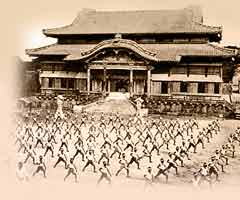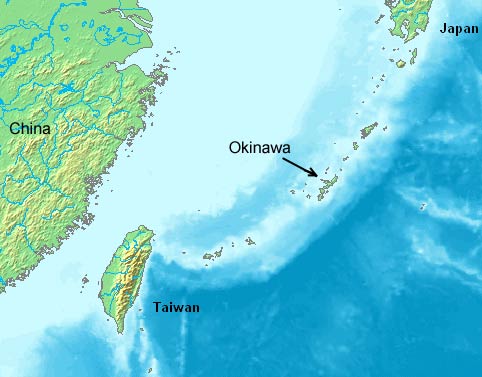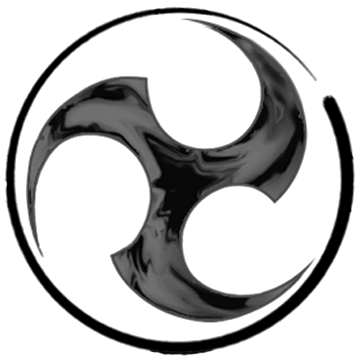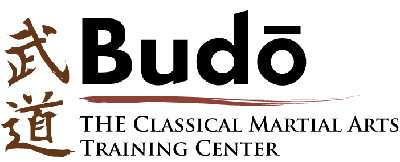Okinawan Karate-do and Kobudo

Okinawa is the largest island of a chain located between China and Japan. It's culture includes aspects of both of those country's cultures, but is also unique. Being an island culture, there was sporadic early contact with other cultures that gradually increased. Since for much of history China and Japan did not get along well officially, direct trade between the two countries was not possible. Much of the trade that did occur went through Okinawa, which had a relationship with both.
Martial arts came to Okinawa in the 600's AD from Chinese Buddhist monks. Being a rather isolated island at the time, martial arts developed there mostly independently. In the 1400's the three kingdoms on Okinawa were united, formal ties with China were established, and other Chinese martial arts influenced what was then called Okinawan-Te. At this time weapons were also banned on the island, and practitioners started studying how to use common objects (often farm implements) for defensive purposes.

The ban was continued after Okinawa was invaded by Japan in 1609 AD. As mentioned, Okinawa continued relations with both countries and was rather prosperous from the trade. In addition to self-defense, the purpose of martial arts training also focused on long-term health and longevity. Even today, Okinawans are one of the longest lived people groups in the world. Empty-hand (karate-do) and weapons (kobudo) training were found to complement each other, both in understanding of self-defense and in health purposes.
The centuries-long weapon ban on Okinawa, facilitated empty-hand training as the primary means for self-defense. In most other countries, including China and Japan, weapons were the primary means of defending the life of one's self and loved ones. Empty-hand defense was secondary. The banning of weapons caused empty-hand martial arts on Okinawa to reach an extremely refined and effective level.
| The influance of the martial arts developed on Okinawa has been very widespread, playing major roles of development of Japanese Karate (e.g Shotokan), Korean Tae-Kwon-Do and American "Karate". While this shows the quality of the Okinawan arts, it has led to confusion in the term "karate". While the arts of Okinawan Karate-do have been developed over centuries on the island, it only migrated (generally in a simplified way) to the Japanese mainland in the 1920s. To Korea in the 1940s where parts of it were incorporated into the newly created art of Tae-Kwon-Do in 1956. And in the US, since about 1980 the term "karate" has come to mean almost anything involving punching and kicking. |
When Okinawan karate-do went to Japan, the official Japanese versions were changed to fit the then Japanese mindset of the importance of power, and also to make it "less Chinese". Therefore most Japanese karate-do is different in that to emphasis what looks like more extreme external power it has lost much of speed and flexibility (and health and longevity focus) that is still retained in the Okinwan arts.

Due to how the name came about, and the fact that more US military personnel were stationed in Japan than Okinawa after WWII, there is much public confusion of the meaning and origin of the term "karate-do". And with the relatively recent rise of so called "American Karate" (which was ironically originally a combination of Korean Tae-know-do and Western Boxing), the word "karate" in English now means anything that includes kicking and punching. For the most part, as mentioned in our "Beyond Martial Arts" page, while these "arts" give a small amount of the benefits possible from actual karate-do training, they but scratch the surface of the actual potential and depth of the art. As the word "karate" (rather than karate-do) implies, these arts have forsaken the "do" aspect of the art (see Beyond Martial Arts), which is where the most important aspects of studying the art come from.
Learn more about our styles of ...


